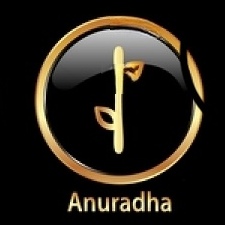Nakshatra
Nakshatra is the term for lunar mansion in Hindu astrology. A nakshatra is one of 27 (sometimes also 28) sectors along the ecliptic. Their names are related to the most prominent asterisms in the respective sectors. The starting point for the nakshatras is the point on the ecliptic directly opposite to the star Spica called Chitr? in Sanskrit (other slightly different definitions exist). It is called Mesh?di or the “start of Aries”.[citation needed] The ecliptic is divided into each of the nakshatras eastwards starting from this point. The number of nakshatras reflects the number of days in a sidereal month (modern value: 27.32 days), that the width of a nakshatra is traversed by the moon in about one day. Each nakshatra is further subdivided into quarters (or padas) These play a role in popular Hindu astrology, where each pada is associated with a syllable, conventionally chosen as the first syllable of the given name of a child born when the moon was in the corresponding pada.
The nakshatras of traditional bhartiya astronomy are based on a list of 28 asterisms found in the Atharvaveda and also in the Satapatha Brahmana. The first astronomical text that lists them is the Vedanga Jyotisha.
In classical Hindu mythology (Mahabharata, Harivamsa), the creation of the nakshatras is attributed to Daksha. They are personified as daughters of the deity and as mythological wives of Chandra, the moon god, or alternatively the daughters of Kashyapa, the brother of Daksha.
Each of the nakshatras is governed as ‘lord’ by one of the nine graha in the following sequence: Ketu (South Lunar Node), Shukra (Venus), Ravi or Surya (Sun), Chandra (Moon), Mangala (Mars), Rahu (North Lunar Node), Guru or Brihaspati (Jupiter), Shani (Saturn) and Budha (Mercury). This cycle repeats itself three times to cover all 27 nakshatras. The lord of each nakshatra determines the planetary period known as the dasha, which is considered of major importance in forecasting the life path of the individual in Hindu astrology.
In Vedic Sanskrit, the term nákshatra may refer to any heavenly body, or to “the stars” collectively. The classical sense of “lunar mansion” is first found in the Atharvaveda, and becomes the primary meaning of the term in Classical Sanskrit.
List of Nakshatras
The classical list of 27 nakshatras is first found in the Vedanga Jyotisha, a text dated to the final centuries BCE. The nakshatra system predates the influence of Hellenistic astronomy on vedic tradition, which became prevalent from about the 2nd century CE.
In Hindu astronomy, there was an older tradition of 28 Nakshatras which were used as celestial markers in the heavens. When these were mapped into equal divisions of the ecliptic, a division of 27 portions was adopted since that resulted in a cleaner definition of each portion (i.e. segment) subtending 13° 20′ (as opposed to 12° 51 3/7’ in the case of 28 segments). In the process, the Nakshatra Abhijit was left out without a portion[3]:179. The Surya Siddhanta concisely specifies the coordinates of the twenty seven Nakshatras.
Abhijit
The 27 Nakshatras:
Rohini, Uttaraphalguni, Uttarasadha, and Uttarabhadrapada are FIXED constellations and are favourable for digging wells, laying foundations or cities, expiatory rituals, planting trees, coronations, buying lands, meritorious deeds, sowing of seeds, installation of Deities, the building of a temple, or any other activity desirous of a lasting or permanent effect.
Mrgasira, Citra, Anuradha, and Revati are SOFT or GENTLE constellations good for fine arts, learning, making friendships, sensual pleasures, decorations, sexual union, wearing new apparel, marriage, singing and dancing, processions, auspicious ceremonies, festivities, dealings of agriculture, and journeys.
Ashvini, Pusya, and Hasta are LIGHT or SWIFT constellations and are good for sports, enjoying items of luxury, starting industries, skilled labour, medical treatments, starting education, starting journeys, seeing friends, buying and selling, the performance of spiritual activities, decorations, fine arts, exercise, and for giving or receiving loans.
Arudra, Aslesa, Jyestha, and Mula are DREADFUL stars and are suitable for success in warfare, invocation of elementals and other spirits, imprisonment, separations, acts of destruction, and the breaking of alliances with superiors.
Purnavasu, Swati, Shravana, Dhanistha and Satabhisa are TEMPORARY, MOVABLE, or QUICK stars favourable for undertaking travel, acquiring conveyances, gardening, going on processions, visiting friends, and anything of a temporary nature.
Bharani, Magha, Purvaphalguni, Purvasadha, and Purvabhadrapada are FIERCE or CRUEL, constellations and are suitable for acts of evil, deceit, and conflict, destruction of enemies, incarceration, poisoning, arson, battle, setting fire, acts of destruction, ill-repute, and cruelty. Krtttika and Visakha are MIXED constellations and good for routine duties, one’s professional responsibilities, and any activities of day-to-day importance.
How to apply this:
FIXED (steady) stars, this is a favourable nakshatra to perform such things as laying foundations, for building, careers, relationships, things that you want to be permanent.
SOFT (gentle) stars, favourable for art, dance, music, marital union, ceremonies.
LIGHT (excellent) stars, which give pleasure, sports, giving medicine, starting industries or travel.
SHARP (harsh) stars, tantric incantations, imprisonment, causing separation of friends, assasinations.
MOVABLE stars, acquiring vehicles, going on procession, gardening.
 SIDDHA SARASWATHA
SIDDHA SARASWATHA


























